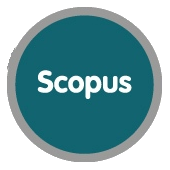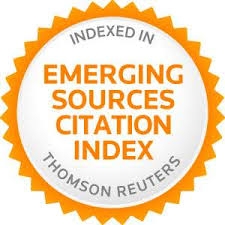Evaluación de la reacción de alumnos y docentes en un modelo mixto de aprendizaje para Educación Superior
Resumen
Palabras clave
Texto completo:
PDFReferencias
Adobe. (2006). Adobe Breeze Solutions: Adobe. Fecha de consulta: 20/07/06 http://www.adobe.com/products/breeze/solutions/rapid_training/.
Akeroyd, J. (2005). Information management and e-learning - Some perspectives. Aslib Proceedings, 57(2), 157-167.
http://dx.doi.org/10.1108/00012530510589128
Allen, M. (2003). Michael Allen’s Guide to e-Learning. New Jersey: John Wiley & Sons.
Alonso, F., Lopez, G., Manrique, D., & Vi-nes, J. M. (2005). An instructional model for web-based e-learning education with a blended learning process approach. British Journal of Educational Technology, 36(2), 217-235.
http://dx.doi.org/10.1111/j.1467-8535.2005.00454.x
AMIPCI. (2005). Hábitos de los Usuarios de Internet en México 2005. Fecha de consulta: 20/05/2006, en http://www.amipci.org.mx/estudios.php.
Anderson, T., & Elloumi, F. (2004). Theory and Practice of Online Learning. Athabas-ca: Athabasca University.
Anido, L., & Llamas, M. (2001). A contribu-tion to the e-learning standardization. Paper presented at the Standardization and Inno-vation in Information Technology, 2001 2nd IEEE Conference.
Ball, R. (2003). Libraries and distance edu-cation - a German view. Libri, 53(2), 71-81.
http://dx.doi.org/10.1515/LIBR.2003.71
Bennet, A., & Elman, C. (2006). Qualitative research: Recent Developments in Case Study Methods. Annual Review of Political Science(9), 455-476.
http://dx.doi.org/10.1146/annurev.polisci.8.082103.104918
Berggren, A., Burgos, D., Fontana, J. M., Hinkelman, D., & Hung, V. (2005). Practi-cal and pedagogical issues for teacher adoption of IMS learning desing standards in Moodle LMS. Journal of Interactive Me-dia in Education(2), 1-24.
Bermejo, S. (2005). Cooperative electronic learning in virtual laboratories through fo-rums. IEEE Transactions on Education, 48(1), 140-149.
http://dx.doi.org/10.1109/TE.2004.837045
Birnbaum, M. H. (2004). Human research and data collection via the internet. Annual Review of Psychology(55), 803-832.
http://dx.doi.org/10.1146/annurev.psych.55.090902.141601
Bork, A., & Ju, G.-F. N. (2005). Elearning versus Alearning. Paper presented at the Advanced Learning Technologies, 2005. ICALT 2005. Fifth IEEE International Con-ference on.
Carman, J. M. (2002). Blended learning de-sign: five key ingredients. KnowledgeNet, 1-11.
Clark, D. (2003). The psychology of learn-ing. EPIC Group.
Coman, P. G. (2002). Critical success fac-tors for eLearning delivery. Paper presented at the Computers in Education, 2002. Pro-ceedings. International Conference on.
Concannon, F., Flynn, A., & Campbell, M. (2005). What campus-based students think about the quality and benefits of e-learning. British Journal of Educational Technology, 36(3), 501-512.
http://dx.doi.org/10.1111/j.1467-8535.2005.00482.x
Cook, D. A., & Dupras, D. M. (2004). A Practical Guide To Developing Effective Web-based Learning. Journal of General Internal Medicine, 19(6), 698-707.
http://dx.doi.org/10.1111/j.1525-1497.2004.30029.x
Currier, S., & Campbell, L. M. (2002). Learning technologies critical success fac-tors for eLearning implementation: educa-tional technology interoperability stand-ards. Paper presented at the Computers in Education, 2002. Proceedings. International Conference on.
Davies, A., Ramsay, J., Lindfield, H., & Couperthwaite, J. (2005). A blended ap-proach to learning: added value and les-sons learnt from students' use of computer-based materials for neurological analysis. British Journal of Educational Technology, 36(5), 839-849.
http://dx.doi.org/10.1111/j.1467-8535.2005.00506.x
De Vries, J., & Bersin, J. (2004). Rapid eLearning: What works. Market, tools, techniques and best practices form building e-learning programs in weeks. Fecha de consulta, 20/07/06 en http://www.adobe.com/products/breeze/whitepapers/bersin_elearning_fp.html.
Dougiamas, M. (2006). Moodle (Versión 1.5.3): Moodle Organization. http://www.moodle.org/. Fecha de consulta: 20/07/06
Elissavet, G. & Economides, A. A. (2003). An Evaluation Instrument for Hypermedia Courseware. Journal of Educational Tech-nology and Society, 6(2), 31-44.
Forman, D. (2002). Cultural change for the e-world. Paper presented at the Computers in Education, 2002. Proceedings. Interna-tional Conference on.
Frank, K. A., Zhao, Y., & Borman, K. (2004). Social capital and the diffusion of innovations within organizations: The case of computer technology in schools. Sociolo-gy of Education, 77(2), 148-171.
http://dx.doi.org/10.1177/003804070407700203
Gagné, R. M. (1997). The Conditions of Learning (3rd ed.). New York: Holt,Rinehart & Winston.
Hall, T. B. (2002). Curriculum development critical success factors for eLearning im-plementation. Paper presented at the Com-puters in Education, 2002. Proceedings. In-ternational Conference on.
Henry. (2001). E-learning technology, con-tent and services. Education + Training, 3(4), 249±255.
Hosie, P., & Schibeci, R. (2005). Checklist and context-bound evaluations of online learning in higher education. British Jour-nal of Educational Technology, 36(5), 881-895.
http://dx.doi.org/10.1111/j.1467-8535.2005.00513.x
INEGI. (2005). Usuarios de Internet por lugares de acceso, 2001 a 2005. Fecha de consulta: 20/07/06, en http://www.inegi.gob.mx/est/contenidos/espanol/rutinas/ept.asp?t=tinf212&c=5569.
ITC. (1998). ITC's Definition of Distance Education. Fecha de consulta: 01/04/06, en http://www.itcnetwork.org/definition.htm.
Krosnick, J. A. (1999). Survey Research. Annual Review of Psychology(50), 537-567.
http://dx.doi.org/10.1146/annurev.psych.50.1.537
KTU. Moodle Teacher's Manual 1.5.3. Fe-cha de consulta: 22/07/06, en http://moodle.tokem.fi/mod/book/view.php?id=5116.
Latchem, C. (2005). Failure—the key to un-derstanding success. British Journal of Ed-ucational Technology, 36(4), 665–667.
http://dx.doi.org/10.1111/j.1467-8535.2005.00543.x
Laurillard, D. (2002). Rethinking University Teaching: A framework for the effective use of learning technologies (2nd ed.). New York: RoutledgeFalmer.
http://dx.doi.org/10.4324/9780203304846
Liu, C., & Lee, J. (2005). Prompting concep-tual understanding with computer-mediated peer discourse and knowledge acquisition techniques. British Journal of Educational Technology, 36(5), 821-837.
http://dx.doi.org/10.1111/j.1467-8535.2005.00505.x
Luan, W. S., Fung, N. S., Nawawi, M., & Hong, T. S. (2005). Experienced and inex-perienced Internet users among pre-service teachers: Their use and attitudes toward the Internet. Educational Technology & Socie-ty, 8(1), 90-103.
McPherson, M. (2002). Organisational criti-cal success factors for managing eLearning implementation. Paper presented at the Computers in Education, 2002. Proceed-ings. International Conference on.
McPherson, M. (2005). Developing innova-tion in e-learning: lessons to be learned. British Journal of Educational Technology, 2005(36), 585 -586.
http://dx.doi.org/10.1111/j.1467-8535.2005.00548.x
McVay, J. G., Snyder, K. D., & Graetz, K. A. (2005). Evolution of a laptop university: a case study. British Journal of Educational Technology, 36(3), 513-524.
http://dx.doi.org/10.1111/j.1467-8535.2005.00487.x
Millwood, R., & Terrell, I. (2005). Over-view: New technology, learning and as-sessment in higher education. Innovations in Education and Teaching International, 42(3), 195-204.
http://dx.doi.org/10.1080/01587910500167860
Miniwatts International, L. (2005, Noviembre 9 2005). INTERNET USAGE STATISTICS - The Big Picture World Inter-net Users and Population Stats. Fecha de consulta: 18/11/06 2005, en http://www.internetworldstats.com/stats.htm.
O'Hara, K., & Sellen, A. (1997). A Compari-son of Reading Paper and On-Line Docu-ments. Fecha de consulta: 15/07/07, en http://www.acm.org/sigchi/chi97/proceedings/paper/koh.htm.
Questionnaire Module. (2006). Fecha de consulta: 20/07/06, en http://docs.moodle.org/en/Questionnaire_module
Questionnaire. Cuestionario phpESP. (2006). Fecha de consulta: 20/07/06, en http://docs.moodle.org/es/Questionnaire
Reforma. (2005, 29 de julio 2005). Reprueba México en e-aprendizaje. Reforma, p. 1.
Schillit, B. N., Golovchinsky, G., & Price, M. N. (1998). Beyond Paper: Supporting Active Reading with Free Form Digital Ink Annotations. Proceedings CHI 98, April, 249-256.
SGC. (1999). Statgraphics Plus for Windows (Versión 4.0): Statistical Graphics Corp.
Tourangeau, R. (2004). SURVEY RE-SEARCH AND SOCIETAL CHANGE. An-nual Review of Psychology(55), 775-801.
Wang, M. Y., & Hwang, M. J. (2004). The e-learning library: only a warehouse of learn-ing resources? Electronic Library, 22(5), 408-415.
http://dx.doi.org/10.1108/02640470410561929
Wautier, J. L., Vileyn, F., & Lefrere, J. J. (2005). Electronic learning: interactive learning in medicine. Transfusion Clinique Et Biologique, 12(2), 150-152.
http://dx.doi.org/10.1016/j.tracli.2005.04.015
Wiley, D. A.Connecting learning objects to instructional design theory: A definition, a metaphor, and a taxonomy. Fecha de con-sulta: 20 oct 05 2005, en http://www.elearning-reviews.org/topics/technology/learning-objects/2001-wiley-learning-objects-instructional-design-theory/
Williams, P., Nicholas, D., & Gunter, B. (2005). E-learning: what the literature tells us about distance education - An overview. Aslib Proceedings, 57(2), 109-122.
http://dx.doi.org/10.1108/00012530510589083
Wopereis, I. G. J. H., Kirschner, P. A., Paas, A., Stoyanov, S., & Hendriks, M. (2005). Failure and success factors of educational ICT projects: a group concept mapping ap-proach. British Journal of Educational Technology, 36(4), 681–684.
http://dx.doi.org/10.1111/j.1467-8535.2005.00546.x
Zenger, J. T., & Walker, T. J. (2000). Impact of the internet on entomology teaching and research. Annual Review of Entomology (45), 747-767
http://dx.doi.org/10.1146/annurev.ento.45.1.747
Enlaces refback
- No hay ningún enlace refback.


